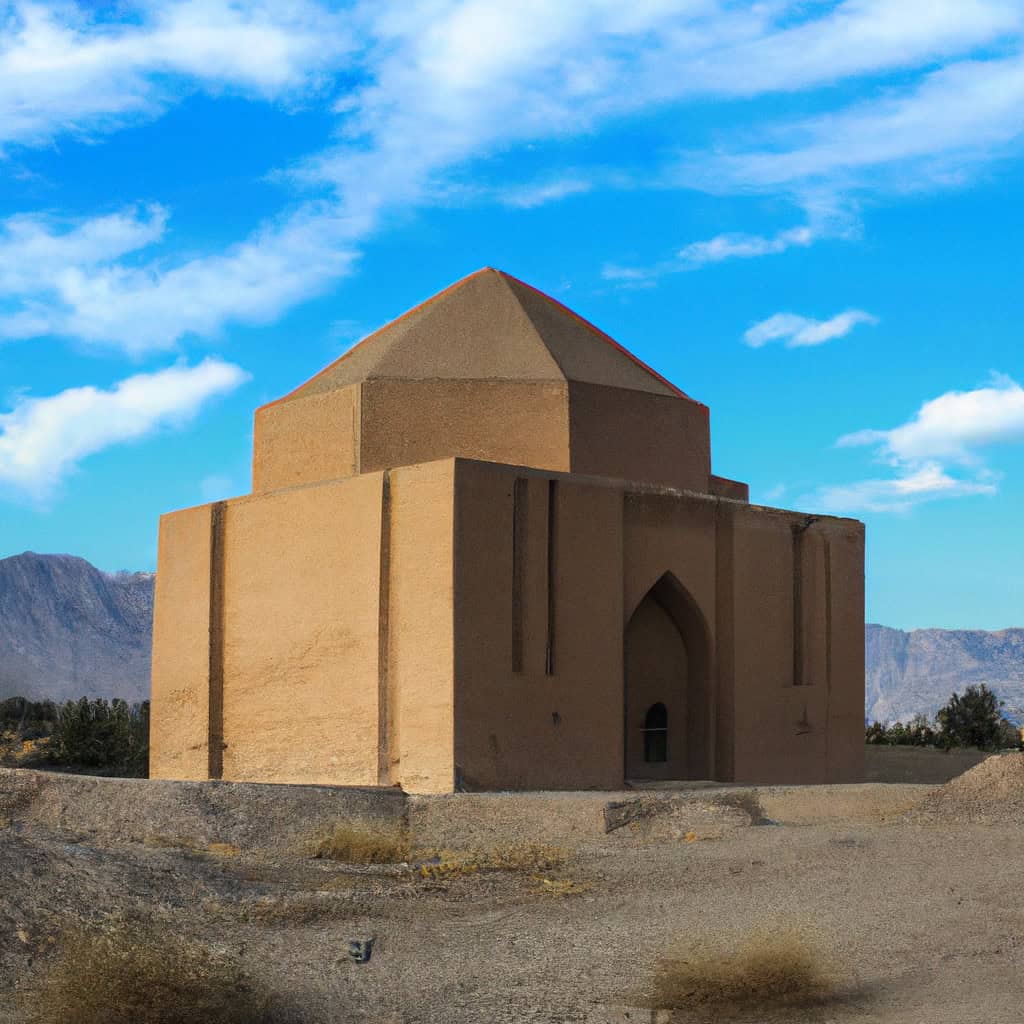Mausoleum of Sanai in Ghazni City, is one of many fascinating sites that both foreign visitors and local tourists can explore while they visit Afghanistan and exploring Ghazni Province. This mausoleum holds a wealth of historical and cultural riches that tell a rich tale of Afghanistan’s past. From its elegant architectural design to the story of its namesake, Hakim Sanai Ghaznavi, a renowned Persian poet, the Mausoleum of Sanai holds a magnetic pull for those with a keen interest in history, poetry, and architecture. Stepping within the walls of this mausoleum is like journeying back plenty of centuries in the past, to times that shaped the Afghanistan we know today.
Mausoleum of Sanai Most Important Events
- Inception of the Mausoleum: The most impactful historical moment at the Mausoleum of Sanai was its creation. Constructed around the originally simple grave marking of Sanai, this mausoleum stands as a testament to the poet’s influence and the peoples’ reverence for him.
- The Enlightenment Era Influence: During the Enlightenment era, West European scholars took an interest in Hakim Sanai’s poetry. His philosophies shaped by Sufism greatly influenced their thinking. This external recognition renewed locals’ interest in the monument and his work, leading to its significant preservation efforts.
- Declaration as National Heritage: Government of Afghanistan declared the Mausoleum of Sanai a national heritage site. This brought a lot of attention to it regionally and internationally, and it was a significant development that added to its legacy.
History of Mausoleum of Sanai in Ghazni City
The Mausoleum of Sanai has a rich past linked to Ghazni city’s illustrious history. In the 11th and 12th centuries, Ghazni was a thriving hub of culture, arts, and learning; Sanai himself was a court poet here. After Sanai’s death, he was buried in a simple grave. Over time, as his philosophical work acquired fame, a mausoleum was built around his grave. The exact date of the mausoleum’s erection remains unknown, but it stands as a physical embodiment of the respect the people had for Sanai.
During Afghanistan’s various periods of invasions and wars, Ghazni city saw plenty of destruction. However, the Mausoleum of Sanai remained untouched, perhaps held in respect by foreign forces owing to its deep cultural and intellectual significance. This mausoleum has witnessed the ups and downs of Ghazni and has stood firmly through the sands of time, a silent observer of the region’s turbulent past.
In most recent history, the mausoleum faced the threat of obliteration due to Taliban activities. However, ongoing conservation efforts by local authorities work tirelessly to preserve this architectural and historical gem, ensuring it remains standing as a beacon of the rich Afghan culture for many generations to come.
Why It’s Important to Afghan History
The Mausoleum of Sanai holds a vital place in Afghanistan’s cultural and intellectual history. Sanai’s work of spiritual and philosophical insight cast a deep impact on Persian literature and thought. His legacy is intricately tied to this mausoleum, which is now a symbol of the intellectual prowess of Afghanistan’s golden era.
Moreover, the Mausoleum of Sanai provides an archival structure that physically represents Afghanistan’s historical evolution. Through eras of peace and war, this mausoleum remained standing, mirroring Afghanistan’s resilience and stoic endurance in the face of adversity.
Why to Visit Mausoleum of Sanai
You don’t have to be a historian or poet to appreciate the charm of the Mausoleum of Sanai. Its beautiful architectural design and tranquil surroundings create an atmosphere you can’t resist, creating a sense of connection with the timeless past. The serene vibes of the domed building coupled with the surrounding lush gardens offer a peaceful break from the bustling city life.
Visiting the Mausoleum of Sanai is also an opportunity to immerse oneself in a unique learning journey. Listen to stories of Afghanistan’s golden era, the profound poetry of Sanai, and his significant influence on Persian literature. Take a heritage walk around Sanai’s final resting place.
- Witness the serene surroundings and stunning architecture of the mausoleum.
- Learn about Afghanistan’s rich intellectual history.
- Enjoy the peaceful atmosphere.
- Gain a deeper understanding of Persian poetry.
- Visit other landmarks in Ghazni.
The Mausoleum of Sanai is located inside Ghazni city and is easily accessible by road. The best time to visit is early morning or late afternoon when the temperatures are milder.
Cultural & Tourist Significance
Ghazni City takes immense pride in being the resting place of one of the greatest poets of Persian literature. Tourists and locals alike flock to the Mausoleum of Sanai not just to pay homage to the poet but to relish the tranquility that the place emanates, even today. The mausoleum’s cultural significance is also enhanced as Ghazni was named the cultural capital of the Islamic world in 2013, recognising its rich historical background.
Aside from its cultural significance, the Mausoleum of Sanai has considerable tourism appeal. It acts as a gateway to the rich history and culture of Afghanistan, drawing in history enthusiasts, architecture lovers and those seeking a spiritual retreat. The lush green gardens encircling the monument and the impressive tomb make it an ideal spot for travelers seeking tranquility amid their busy travel schedules.
Going beyond the regular touristy destinations, the mausoleum provides an enriching cultural experience that leaves visitors with a deeper understanding of Afghanistan’s complex yet mesmerising past and an appreciation for the beauty, resilience and depth of Afghan culture.
Interesting Facts
Several legends and myths surround the Mausoleum of Sanai. Some believe that wishes whispered in the premises of the mausoleum are heard and granted by Sanai himself.
Sanai’s philosophies, intricately explored through his poetry, have heavily influenced the Sufi tradition. His work “Hadiqa al Haqiqa” (The Walled Garden of Truth) is considered a pivotal piece in Persian literature, highlighting his enduring intellectual legacy.
Despite its historical value, the mausoleum remains quite the hidden gem owing to the often overshadowed travel destination that is Afghanistan. But the allure of the Mausoleum of Sanai remains — a beacon of history, culture, and resilience standing tall in the face of time.


